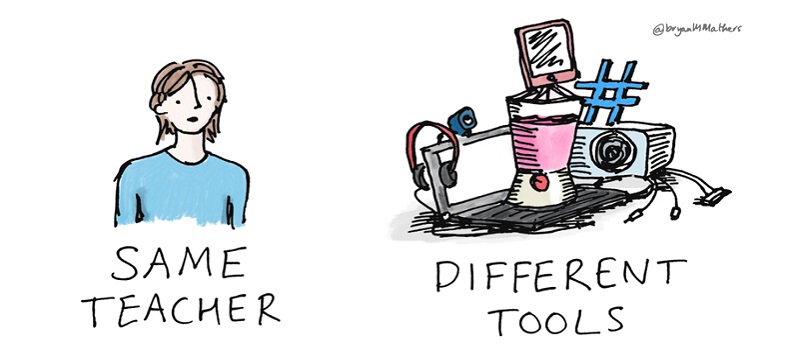2.4 Connectivism
This theory takes into account the availability of a plethora of information on the web, which can be shared around the world almost instantaneously with the rise of social networking. Connectivism draws on chaos theory’s recognition of ‘everything being connected to everything else’. It also draws on networking principles, and theories of complexity and self-organisation, and is built on a notion that ‘the connections that enable us to learn more are more important than our current state of knowing’ (Siemens, 2005).
Siemens explains that:
‘Connectivism is driven by the understanding that decisions are based on rapidly altering foundations. New information is continually being acquired. The ability to draw distinctions between important and unimportant information is vital. The ability to recognise when new information alters the landscape based on decisions made yesterday is also critical.’
Unlike the other theories presented above, connectivism is ‘a learning theory for the digital age’ (Siemens, 2005). It is also newer and less established in terms of a body of research. Whether or not you agree with its arguments, two very important questions for this course are prompted by connectivism: has the internet fundamentally changed what learning is? And does the internet change what education, and educators, should aim to achieve?
Activity 2 How do educational theories match with your teaching?
Make brief notes on the differences between behaviourism, cognitivism, constructivism and connectivism. Are there ideas that are present in your current teaching practice? How do they appear? Do these theories fit with your experiences of learning?
Discussion
As a teacher, you are probably familiar with these theories already, but it can be helpful to take a step back and look at your teaching with a critical eye. This activity should help you to identify where you draw on the theories, which, as you move through the course, should help you to decide where the theories will play a role in your online teaching.
Here you have explored some of the theories that inform the underpinning principles of effective online teaching. However, online teaching cannot take place without the application of technology, and this is what you will focus upon next.
2.3 Constructivism
